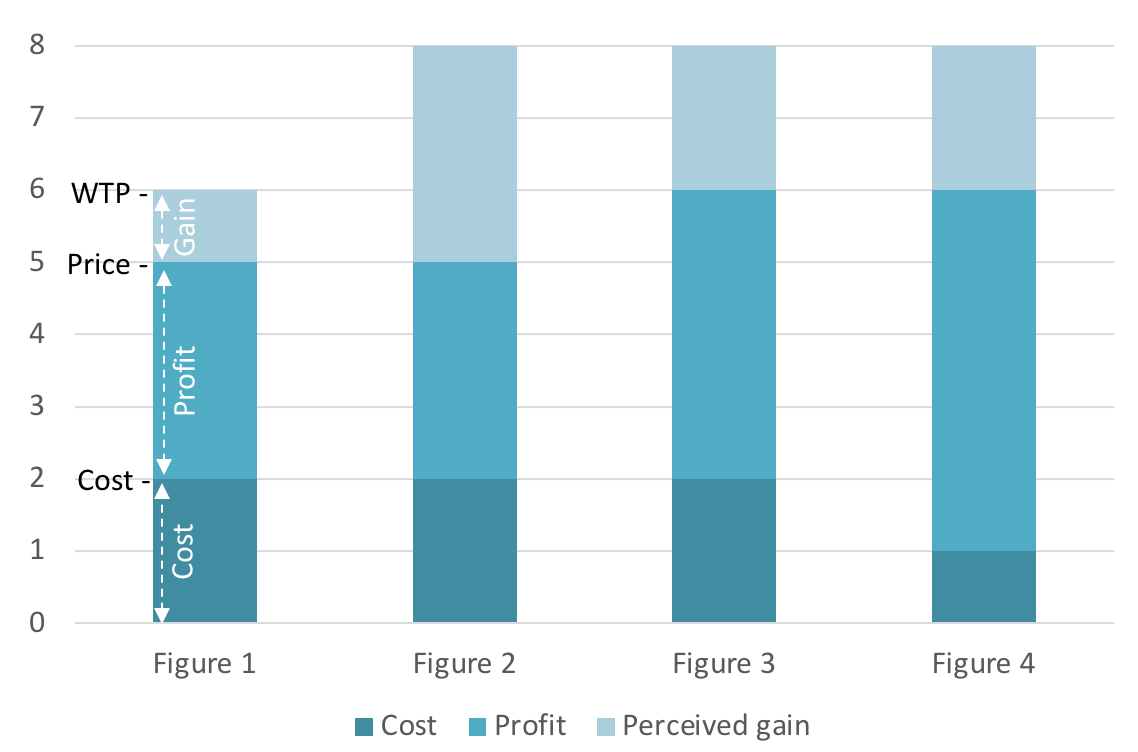What is innovation?
Innovation is the recombination of existing factors to create value for the involved actors: customers, company, partners and suppliers. For small businesses (SMEs), this could mean creating products and services that customers like and buy (value proposition). However, companies should also create and capture value for themselves (profit proposition), by creating profitable and sustainable business models. Innovation does not necessarily involve invention, nor technology: it is about value creation.
Why should SMEs innovate? – a story of two farms
Let’s take the example of two small businesses – farms producing fruits and vegetables.
Incremental innovation
At some point, company A decides to brand its products, let’s say “Green Orchard”. This tiny brand innovation allows them to gain customer trust through consistent quality, traceability (origin), and eventually build loyalty. As an effect, company A affords to raise the prices slightly, which helped increasing their profit margins. Company B does nothing, continuing to sell fruits and vegetables as commodities.
Adjacent innovation
Two years later, company A decides to invest in equipment to create preserved food products: canned compote, pickles, ratatouille etc. The advantages of this adjacent innovation?
- They created products with a higher profit margin, thus increasing their profits
- By using their fruits and vegetables to make preserved food, they reduced the risks associated with seasonality
- By creating a branded range of products, company A was able to sell through supermarkets and small shops. This allowed them to create new sales channels, further increasing their revenues
- Within a couple of years, company A started to sell more than they could produce. They became an aggregator, buying fruits and vegetables from other farms, including from farm B, which still does nothing
A couple of years later, company A started to face intense competition from C, fighting for shelf space.
Instead of trying to reduce their prices to gain market share, company A decides to innovate across its product line. This was made through improving the recipes of its products and changing the packaging to help with brand communication. Customers, eager to experiment new offerings, become increasingly attracted by company A products, being seen as tastier and “like home.
The sales of company A increase significantly, taking serious market share from competitor C, which does not innovate. With more cash at hand, company A has now the resources to create a new brand, a line of organic products with no gluten. The high willingness to pay of the customers allows for higher prices, therefore increasing the profitability of this product line.
Transformational innovation in small businesses
After 3 more years, company A decides to explore new sales channels. They start selling through farm-to-table aggregating platforms. Eventually they develop their own online platform, creating a new brand and concept. The value proposition included weekly subscription for seasonal, fresh farm organic food, based on suggested recipes to cook at home. This business model innovation allows them to further increase their revenues and profitability.
So back to our initial question: how does innovation help increasing revenues and profitability for small companies?
The economics of innovation explained

Some concepts:
- WTP (Willingness to pay) – the maximum amount a customer is happy to pay for a product or service
- Gain (perceived) – Difference between WTP and Price – what the customer perceives as gained value
- Profit – Price minus Cost
Take a look at figure 1: it costs both SMEs A and B €2 to produce a good, and they sell it at €5, making a €3 profit. However, for the value she perceives, the buyer is willing to pay up to €6. So in that case, the buyer “gains” €1, the difference between what she is willing to pay and what she actually pays. •
In figure 2, company A innovates its product, increasing the willingness to pay of customers to €8. At the same paying price (€5), the buyer is more eager to buy the product from company A (because he “gains” €3 in this case), whereas company B, which did nothing, (figure 1) offers him only € 1 as a gain. As an effect, company A will gain market share from competitor B.
In figure 3, company A, in addition to innovating, therefore raising the willingness to pay to €8, also increase their price. In this case, their profit margin increases from €3 to €4! Does the company lose market share to B, because of increase in price? In this case not, because the buyer still gains more value (€8 – €6) compared to company B (€6– €5). So in this case company A increases BOTH revenues and profitability.
Figure 4: Going forward, not only that company A increases the willingness to pay and price, as in figure 3, but through process innovation they manage to reduce their cost structure, bringing the cost to €1, therefore increasing their profitability even more. (€6 – €1).
Convinced about innovation in small businesses?
Now that you have the answer to “why should our SME innovate?”, remember to:
- Always align your innovation efforts with your company strategy and
- Measure your innovation efforts in terms of impact on revenues and profitability.
Still having questions about how to innovate in your small business? Get in touch with us!
Newsletter
Subscribe our newsletter to get our latest update & news

